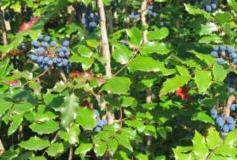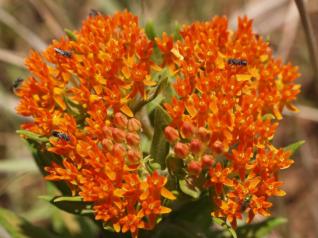
| In [prescribing] medicinals, what is vital is not variety but the choice of what is effective. -- Liu Yi-ren |
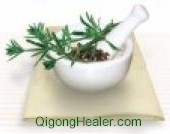
according to Traditional Chinese Medicine
EDITOR'S NOTE: Ricardo B. Serrano, a licensed acupuncturist and a master herbalist trained in Western and Chinese herbology, has included two samples of western herbs Oregon Grape Root and Pleurisy Root according to Traditional Chinese Medicine by Thomas Avery Garran, to show the efficacy and safety of western herbs when prescribed by licensed acupuncturists and Chinese medical practitioners.
When western herbs are added together with acupuncture, acupressure, Qi-healing, Qigong (see Herbs that calm the Spirit), balanced diet, exercise, and traditional Chinese herbal tonics and formulas with alkaline water, as Ricardo does in his regular non-drug treatment practice, a Chinese medical practitioner's abilities to more effectively treat patients (and himself) are enhanced.

According to Herbs: Vital to a Healthy Balance by Klaus Ferlow, Herbalist, "The value of herbs to our lives and to our health cannot be overstated. Since our ancestors first walked the earth, herbs have formed the basis of medicine chests, cosmetic bowls, culinary spice jars, perfume vials and dye pots. Most herbs in their natural state are safe, and do not leave a residue in the body that could produce negative side effects. Drugs tend to treat or mask the symptoms or condition, while herbals emphasize a preventative approach to healthcare helping to balance and support the bodily functions. The compounds in herbs work synergistically in the body to promote healing. All plants have therapeutic properties as they contain a variety of biologically active substances. Plants undergo photosynthesis, transforming carbon dioxide into energy rich substances. The resulting carbon chains are further transformed into a variety of compounds such as lipids, alkaloids, essential oils and tannins. Through other biochemical processes, minerals and nitrates are absorbed by the roots and transformed into vitamins, trace minerals and antibiotics. Herbs can affect biological systems in our bodies at the cellular level. Ultimately these high levels of biologically active substances can produce pharmacological and therapeutic affects. The nutritional value of herbs is high and organically grown herbs (no herbicide and pesticide spraying and chemical fertilizer) offer maximum benefits. Herbs are extensively used in cosmetics, herbal creams, lotions, shampoo, toothpaste, oils, tinctures, sprays and in cooking. The multitude of uses for herbs as foods, medicines and in products emphasizes how vital botanical plants are to our health and well being. Unfortunately, as the Pharmaceutical industry developed the ability to synthesize medicine from the inert substances such as petroleum and minerals, and developing sophisticated marketing strategies, the therapeutic use of natural herbs diminished especially in North America. Recently however, there has been a resurgence of interest in herbs and healing. As people begin to lose faith in prescription drugs and antibiotics, they are rediscovering that herbs and herbal remedies and products are an effective and comparatively inexpensive form of healthcare. Herbal medicine represents a particular approach to healing which differs from allopathic medicine. Rather than relieving a single symptom with single active ingredient, herbs offer a holistic approach by striving to deal with the entire system and treating the cause. Herbal medicine can only be truly holistic if it acknowledges the social and cultural context in which the illnesses occurred, and then the desired healing takes place. (Body, Mind & Spirit). According to Chris Kilham, the medicine hunter, www.medicinehunter.com, over five billion people today are still using herbal remedies for healing! The renewed interest in holistic medicine, as well as a great number of traditional therapies, has encouraged changes within the existing medical profession. Given the severe financial crisis of our medical system (many professional predict a collapse within 5 - 10 years) it is incumbent upon us all to seek out and utilize appropriate health alternatives." According to Dr. Michael Tierra, herbalist and author of Way of Herbs, and Planetary Herbology, "The following are some of the many good reasons for TCM herbal practitioners to incorporate and use Western herbs, especially herbs native to their own region of practice:
It is my hope that with this book I will do justice to the teachings I received from Michael Tierra and Christopher Hobbs, as well as many others along the way. By developing these ideas and bringing to you the first presentation of 58 Western herbs in the familiar language and format of our Chinese medicine materia medicas, I acknowledge all of you who have supported and schooled me along the way. May each who reads this find a gem that allows him or her to help relieve human suffering." The following two samples of western herbs with other herbs were taken from Thomas Avery Garran's book Western Herbs according to Traditional Chinese Medicine, A Practitioner's Guide. See his website Source Point Herbs
by Thomas Avery Garran Oregon Grape Root Mahonia aquifolium (aka Berberis spp.) Berberaceae Cortex seu Radicis Mahoniae Qi and Flavor: bitter, cool Channels entered: liver, gallbladder, kidney, stomach, small intestine, large intestine Actions: antimicrobial, liver stimulant, bitter tonic Functions & Indications: Clears heat and drains damp from the middle jiao for symptoms such as warmth and pain in the epigastric and hypochondriac areas, reduced appetite, nausea, regurgitation, heart burn, constipation, mild diarrhea (damp-heat invading the spleen), bloating after meals with difficulty digesting fats and protein, conjunctivitis, foul breath with a thick yellow tongue coating and a replete rapid pulse. Also used for damp-heat in the intestines where the heat is the predominate sign. This is marked with malodorous diarrhea or constipation, bloody stools, dark malodorous urine, stuffiness in the epigastric and chest area, abdominal pain, intestinal abscess, fever, mental restlessness or muddled thinking a red tongue with a sticky yellow coat and a rapid, slippery pulse. Mahonia’s bitter and cooling nature effectively drain and cool heat, while draining damp from the middle jiao. Clears heat, either from vacuity or repletion, where the heat has dried up body fluids causing dry skin, dry mouth, bleeding gums or nose, red eyes, red tongue with or without a yellow coat and a pulse that is rapid and either thready and weak, or full and forceful depending on the condition. Although Oregon Grape Root is bitter and cool, effectively treating replete heat, it also is very appropriate for vacuity heat. It is enriching and is often a first choice when I am treating vacuity heat. I prefer to use the whole root, instead of only the root bark for this indication. This is not always possible when purchasing the medicinal from a purveyor, however this remains a medicinal that I enjoy harvesting for myself. Furthermore, there is sometimes “lower quality” material available where the harvesters were too lazy to peel the bark. This could be to your advantage if you are using the medicinal in this fashion. Like many other herbs in this category, Oregon Grape Root can be used externally. Its cooling nature effectively clears heat from the skin and other places where it comes into direct contact. Used as a wash or dusting powder for skin conditions caused by heat or damp-heat. Prepared as a sitz bath or douche, Oregon Grape Root is useful for damp-heat vaginal conditions with yellow malodorous excretions. The leaves are prepared as infused oil and used externally to clear heat and resolve toxicity for abrasions. Cautions: This herb is not for long-term usage, use caution with weak deficient persons who have signs of cold. Dosage and Preparation: 3-9g in decoction; 2-4ml in tincture; 0.5-2ml fluid extract. The tincture prepared from the recently dried root bark, or a fluid extract from the same, is the preferred preparation although a decoction is best for use in patients that have yin vacuity with dryness. The leaves of this plant can also be prepared as a salve or cream for external use. Good quality is the root (and stem) bark only. It should be dark yellow to almost orange. The whole root can be used when the core is yellow. Much of the commercially available Oregon Grape Root is the whole root and often with the stem. The most important qualities to examine are its color—the deeper yellow the better—and its bitter flavor. Major Combinations:
Translation of Available Source Material: Mahonia bealei, (Mahonia fortunei), Mahonia japonica Flavors: from (yin piàn xin shen), bitter, cool Channels: from (ben cao zài xin), enters Lung channel Clears heat, supplements vacuity, stops cough and transforms phlegm, treats pulmonary consumption with coughing of blood, steaming bone tidal fever, dizziness and tinnitus, aching lumbus and limp legs, heart vexation, red eyes. 1) from (ben cao zài xin): treats vacuity taxation cough 4) from (zhí wù míng shí tú kao): treats coughing blood 5) from (yin piàn xin shen): treats lung taxation, stops cough and transforms phlegm, reduces vacuity heat, kills worms 6) from (xiàn dài shí yòng zhong yào): cool and clearing, enriching and strengthening herb, actions are similar to Ligustri Fructus, suitable for tidal fever, steaming bone, aching lumbar, weak knees, dizziness, tinnitus, etc. 7) from (lù chuan ben cao): drains fire and reduces fever, treats warm diseases with fever, heart vexation, diarrhea, red eyes 8) from (xi zàng cháng yòng zhong cao yào): treats warm heat dysentery, red, swollen, and painful eyes, swelling and toxin of welling abscess and sores Commentary: There is some confusion about the genus name for this plant. Berberis is an ancient Arabic name for barberry, without spines on the leaves. Mahonia, a name to honor the Irish-American botanist Bernard MacMahon, was once considered a group within the Berberis genus, but is now considered separate. There are two distinct differences between the genera. Mahonia has spiny leaf margins while Berberis does not. Berberis' fruit has 2-3 seeds, while Mahonia has 3-9 seeds. There are approximately 600 species within the combined genera. This is a very abundant plant in the Pacific Northwest of the US. It is a pioneer plant and is one of the first plants to colonize after the logging companies have raped the acres of forest for its timber. The clear abundance of this plant makes it an excellent and stable plant for use in herbal medicine. It has a long history of use and is very safe. I have found it dependable and highly recommend its use. This herb is effective for clearing heat and I have found it safe and effective for clearing yin vacuity heat without damaging the yin; I liken it to Chinese Phellodenron for this use. Not only does this medicinal effectively clear vacuity heat, it also assists the construction qi. While clearing heat it helps to nourish by assisting to build structure within yin. Native Americas of the Pacific Northwest used the plant for other uses as well as medicine. The root was boiled and used as a yellow dye for basketry and clothing. The ripe fruits were collected and eaten in various preparations, either raw or cooked, but were rarely preserved by drying; in fact, some tribes considered them poison. The fruit is quite sour, which account for some considering it poison. However, the berries can be boiled and make a fine jelly. Various species of this medicinal were official in the United States Pharmacopeia and National Formulary from the mid 19th century through the mid 20th century. Mahonia aquifolium was made official in the British Herbal Pharmacopeia in 1983.
HERBS THAT TRANSFORM PHLEGM AND STOP COUGHING This category is really two categories combined for clinical ease to distinguish these medicinals as those used to treat phlegm located in the lung. That being said, one should not assume that all three of the medicinals found in this chapter are used only for phlegm in the lungs. To transform phlegm implies a relative gentle action on eliminating phlegm. Stopping cough is exactly that, downbearing qì and restoring the depurative function of the lung. Pleurisy root is a very important medicinal in this category with a wide range of actions, which also makes it a very important medicinal in the materia medica. It is bitter, acrid, and cold in nature. Pleurisy root is very effective for diffusing lung qì and circulating the qì of the chest, thus it is used for a wide variety of ailments in the chest including cough, major chest bind, and asthma. Yerba santa is likely the most famous of the California endemics. Unlike pleurisy root, yerba santa is warm and is an important medicinal for transforming phlegm in the lung and spleen. Yerba santa also has the extra benefit of warming spleen yang and resolving rheum. Both pleurisy root and yerba santa resolve the exterior, but their action is different. Grindelia is bitter, acrid, and cool in nature and is an important medicinal for diffusing and downbearing the lung qì. Grindelia also treats the lower burner with cool and bitterness, clearing heat in the kidney and bladder. Pleurisy Root Asclepias tuberosa Aslepiadaceae Butterfly Weed, Wind Root Flavor and Qì: bitter, acrid, cold Channels entered: lung, large intestine Actions: expectorant, antitussive, diaphoretic, anticatarrhal Functions & Indications
CAUTIONS Pleurisy root is cold in nature and should be used with caution by those with spleen qì vacuity or internal cold. Dosage and Preparation Use 2–6g in strong infusion or decoction, 2.5–5ml in tincture. The fresh plant tincture of pleurisy root is superior to the dry preparation. Pleurisy root is gathered in the autumn after the plant has withered or in the early spring. The root is either prepared fresh or sliced and dried for storage. Good quality root is grayish-white and firm. It is quite fibrous, so if it is cut and sifted it will have significant fibrous material included. Major Combinations
Commentary Pleurisy root is exceptional in the treatment of lung heat, especially when phlegm is a confounding factor. Further, pleurisy root is a very effective medicinal for major chest bind (da jie xiong). The genus name Asclepias comes from the ancient Greek god of medicine Asklepios, and "tuberosa" arose due to its enlarged root system. The genus is endemic to America. The Cherokee used this plant for pain in the breast, stomach, and intestines. Most Native American Peoples within its range used it for lung diseases. It is often combined with Zingiber to enhance its effectiveness. Pleurisy root was official in the United States Pharmacopoeia from 1820–1905 and the National Formulary from 1916-1936.
HERBS THAT CALM THE SPIRIT This category consists of medicinals that generally nourish the heart and quiet the spirit. The heart is the storage place for the spirit, if the heart is either replete or vacuous, the spirit may become disquieted. When the spirit is disquieted a patient may experience heart vexation, insomnia, palpitations, anxiety, susceptibility to fright, and even biomedically defined clinical depression. The Western materia medica is replete with medicinals that fit into this category, perhaps because of our cultural predilection for stress, overwork, and undernourishment - physical, emotional, and spiritual. Seven medicinals are represented here. Each has its niche, but with the exception of passionflower, none of them are nourishing. California poppy (Eschscholzia californica) is bitter and draining, and thus is generally applied in conditions associated with heat, especially replete heat. Passionflower (Passiflora incarnata) is nourishing and can be used for all types of disquieted spirit. St. John's Wort (Hypericum perforatum), kava (Piper methysticum), and valerian (Valeriana officinalis) are useful because of their qi-coursing actions. Although chamomile (Matricaria recutita) also courses the qi, this is a weaker action, and this plant will be more serviceable when digestive problems exist. Skullcap (Scutellaria lateriflora) is an exceptionally important medicinal native to the Americas. Skullcap is bitter, acrid, and cool. It quiets the spirit and resolves depression - both in the heart and liver. It is also helpful in the treatment of liver-wind conditions. See Awakening the Soul Qigong and Enlightenment Qigong for Returning to Oneness
Reference: Western Herbs according to Traditional Chinese Medicine, A Practitioner's Guide by Thomas Avery Garran, 2008.
Acknowledgement: Ricardo would like to thank and acknowledge Thomas Avery Garran for his integration of western herbs into the system of traditional Chinese medicine in a book format that allows those practitioners trained in Chinese medicine to effectively and safely add western herbs to their regular practice.
 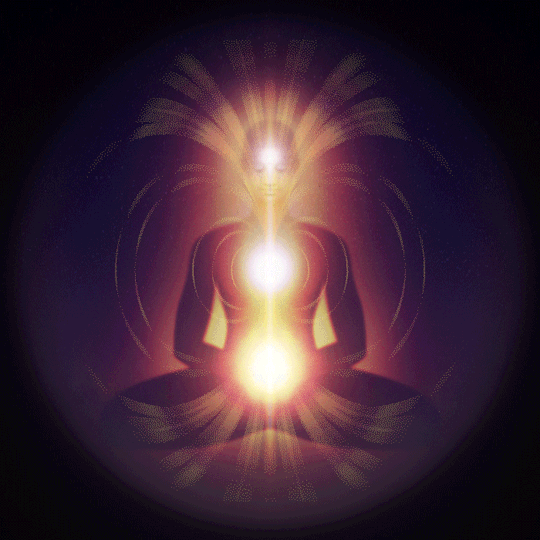 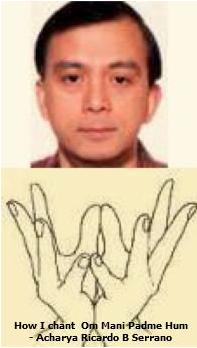  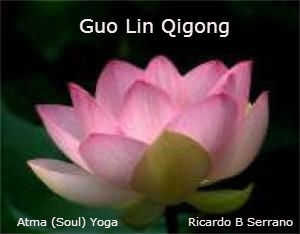 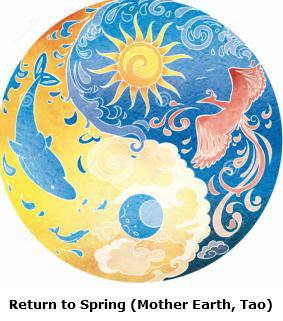  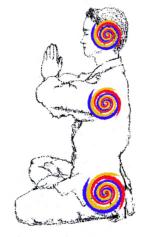 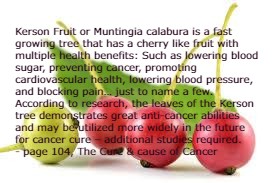  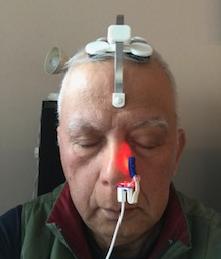 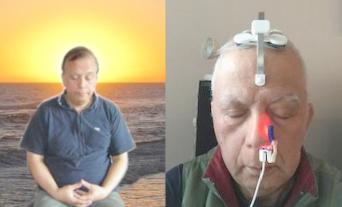    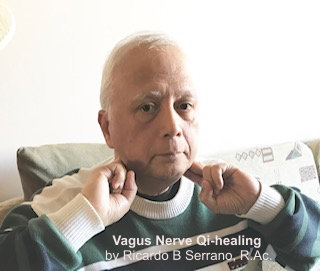 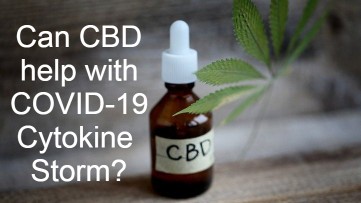           

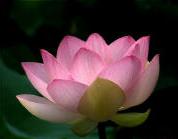 

  North Vancouver, B.C., Canada Tel: 604-987-1797 Contact Qigonghealer.com Blog Contact Us Qiwithoutborders.org |
 According to Thomas Avery Garran, author of Western herbs according to Traditional Chinese Medicine, "Using Western herbs within the paradigm of traditional Chinese medicine is a controversial undertaking, but one that I believe is important. The path that I've followed, first as a student and later as a practitioner and teacher, has led me to a unique understanding of herbs, one that convinced me there is great value in attempting to integrate the insights and knowledge from two great herbal traditions. The primary motivating force behind this work is actually a desire to redefine the understanding of the plants I have presented here. I have used the insights and knowledge on the healing properties of these plants gained from the Western herbal tradition to guide me to their use, and the wisdom from the Chinese medical paradigm as a framework in which to redefine the Western herbal understanding. Thus the expression of the work herein, is in part, an integration or fusion of East and West. I prefer, however, to see it more as an alternate way of looking at much of the herbal healing information. Please note that some of the clinical data comes from my own or colleague's personal experience. Our data may differ somewhat from the currently available literature.
According to Thomas Avery Garran, author of Western herbs according to Traditional Chinese Medicine, "Using Western herbs within the paradigm of traditional Chinese medicine is a controversial undertaking, but one that I believe is important. The path that I've followed, first as a student and later as a practitioner and teacher, has led me to a unique understanding of herbs, one that convinced me there is great value in attempting to integrate the insights and knowledge from two great herbal traditions. The primary motivating force behind this work is actually a desire to redefine the understanding of the plants I have presented here. I have used the insights and knowledge on the healing properties of these plants gained from the Western herbal tradition to guide me to their use, and the wisdom from the Chinese medical paradigm as a framework in which to redefine the Western herbal understanding. Thus the expression of the work herein, is in part, an integration or fusion of East and West. I prefer, however, to see it more as an alternate way of looking at much of the herbal healing information. Please note that some of the clinical data comes from my own or colleague's personal experience. Our data may differ somewhat from the currently available literature.